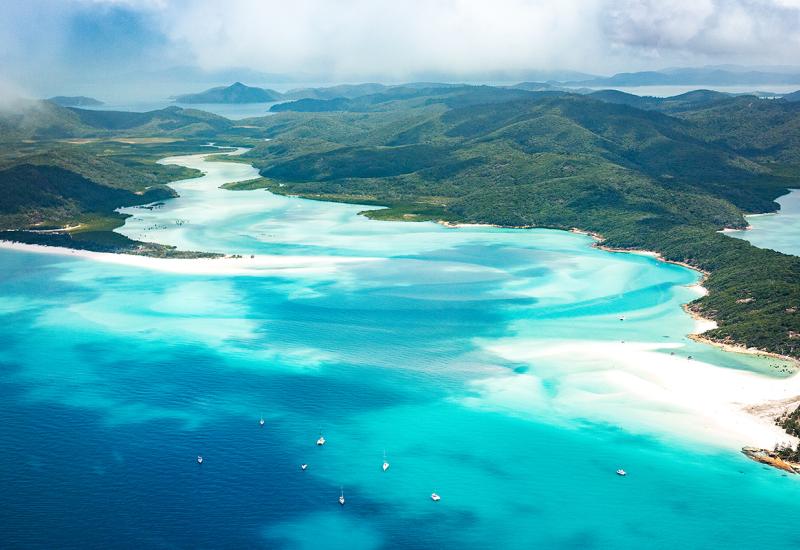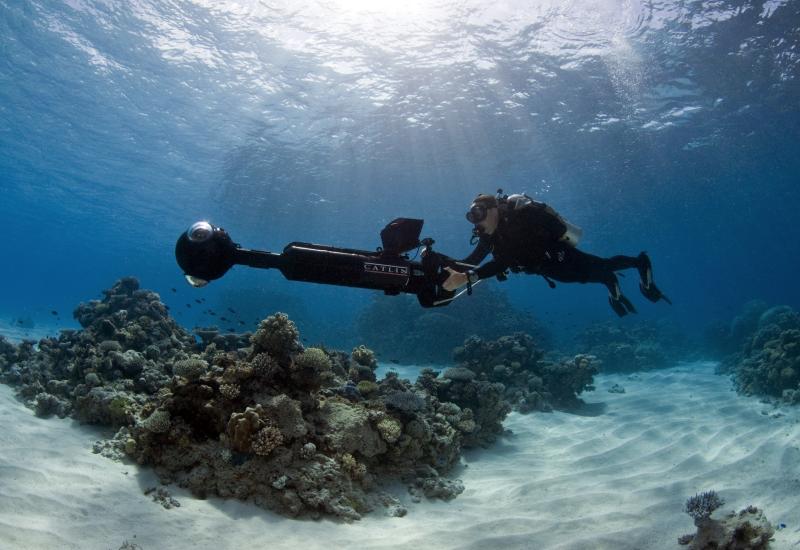Photo Gallery: Beautiful Bali

Mike VeitchJust offshore from Tulamben is the must-dive wreck of the USS _Liberty, _which was torpedoed by a Japanese submarine in the Lombok Strait on January 11, 1942. It remained on the beach until 1963, when lava flow from nearby Mount Agung pushed the vessel back into the water.

Mike VeitchFor more than 50 years, the sea has claimed the ship for its own, and Liberty now acts as an oasis for life in the black-sand desert of Tulamben.

Mike VeitchPuri Jati is Bali’s childcare — the majority of fish here are juveniles, growing up safe and sheltered in the shallows of the bay.

Mike VeitchA humbling sight, but just an every day occurence in Bali.

Mike VeitchThe new (but little-used) cruise-ship jetty, hardly two years old, at Padang Bai is already teeming with life.

Mike VeitchA deity worshipped by Hindus

Mike VeitchGo ahead. Dive in.

Mike VeitchVarious boats are used for local community transportation and as boat charters for visitors. Click NEXT to see more of what Bali has to offer for divers.

Mike VeitchBalinese rice terraces are world-renowned for their beauty.

Mike VeitchMore of this iconic sight in Bali.

Mike VeitchHow's that for a refreshing shower?

Mike VeitchThere's cool critters out of the water too.

Mike VeitchIndonesian waters are full of unusual animals in unusual places, but you need to know where to look.

Mike VeitchJust hanging out.

Everything you need to know for your dive trip in Bali. Ready to book?
- Aquamarine Diving — Bali The PADI Five Star Resort offers three boats, six air-conditioned vans, trips all over the island, and training up to divemaster.
- Mimpi Resort Tulamben Mimpi’s infinity pool is a cool place to hang post- dive, and just steps away from the famed drop-off.
- Blue Season This PADI Five Star CDC, based in Sanur, offers one boat, three air-conditioned vans and training up to instructor.
Her name was Eveline and she was on a journey of spiritual enlightenment. Eveline was on her way to the new-age nirvana of Ubud, a small town nestled in the foothills of Bali’s volcanic spine, but we shared a cab as far as Sanur, where my own, more-secular journey was to begin. I started telling her of my plans of a scuba-diving safari to sample Bali’s magnificent reefs and creatures, but she interrupted, grasping my forearm, eyes shining bright.
“You will see in Bali the gods are everywhere!” she said. “They are part and parcel of normal daily life, and spiritual moments happen all the time. Observe, feel, identify these moments; open your soul!”
She dropped me off, I wished her success, and she showered me with blessings. I looked around me. I was standing on the steps of the local McDonald’s, traffic roaring past. Hardly the most edifying of places to begin a spiritual journey.
Then the door beside me opened, and a girl emerged wearing a sarong and a delicate lace top, balancing a tray in one hand. She knelt and gently placed on the ground a small woven palm dish containing flower petals, rice, a clove cigarette, a piece of candy, and a burning incense stick, and proceeded to offer a prayer at the fast-food restaurant’s temple.
Transfixed at this display of grace and reverence — a simple offering performed two to three times daily at virtually every home and business on the island — I was lost in the moment, hardly noticing she had risen and was looking at me with a brilliant smile. “For the gods,” she said, walking back inside. And, hopefully, for me.
ON SAFARI
My ride arrived in time: a minibus sent by PADI Five Star Resort AquaMarine Diving — Bali. A bundle of energy in the form of a small Indonesian man, Janri leaped down, greeted me enthusiastically and introduced me to Wayan, a Balinese whom I would come to know as driver supreme and cultural touchstone.
As a dive destination, Bali’s greatest asset is its variety. There are terrific muck dives, a world-class shipwreck, fast drifts, deep, fabulous coral walls, big fish and tiny critters — inconveniently, however, they are not all in the same place. The island is large and has a limited road network; in order to experience the best of Bali underwater, you have to hit the road. Instead of staying in one place and enduring a series of long return trips each day, though, my plan was to minimize the travel time by going “on safari” and moving from site to site.
Our first stop was Padang Bai, in Bali’s southeast. This is the base that most operators use to dive the current-swept islands in the strait between Bali and its neighboring island, Lombok. We dropped in off the small, uninhabited offshore island of Tepekong, the best place in Bali to see sharks and a site Wayan had men- tioned was venerated by the Balinese. Underwater, I sensed the presence of powerful forces but chalked it up more to the extreme high volumes of water surging past the tiny island. For our second dive, we elected to be cautious and tucked into a small bay, where we spent an hour swimming over vast expanses of hard coral, nipping through swim-throughs and poking our noses under enormous boulders to see baby whitetip sharks circling beneath.
Next we went treasure hunting. Indonesian waters are full of unusual animals in unusual places, but you need to know where to look. This is where guides like Janri come in handy. The new (but little-used) cruise-ship jetty, hardly two years old, at Padang Bai is already teeming with life in its weirdest forms: Large frogfish sat as motionless as sponges on the pier’s pylons, flying gurnards and devil scorpionfish were nearly invisible against the sand, and a mimic octopus pretended to be anything but an octopus while we watched in delight at its contortions.
SHIVA THE DESTROYER
The following morning, we departed early for the north coast to Tulamben. Along the way, Wayan told a tale of how this tiny town has become “Bali Dive Central.” Mount Agung — Bali’s tallest and most sacred mountain — looms over Tulamben. Hindus believe Agung is the home of Shiva (or Siwa in Balinese). Reflecting the dichotomy of its resident deity, who is both Destroyer and Recycler, Mount Agung is both a taker and a giver of life. In the case of Tulamben, the mountain annihilated the village during its last eruption in 1963 but simultaneously granted its people a new livelihood for when they eventually returned.
The rivers of lava that spilled down the mountainside not only destroyed the village but also carried a wrecked World War II freighter — the USAT Liberty, beached on the rocky shore two decades earlier — into the sea. The ship was deposited at perfect diving depth, with its shallowest point (at the stern) just 15 feet deep, lying horizontal to the shore, where it began the transformation from wreck to reef. “The Liberty was a gift from the gods,” says Wayan.
Each morning, divers arrive from Bali’s southern tourist strip, Kuta, to dive Liberty. Although large, the wreck can get crowded, so Janri advised us to wait until late afternoon for more solitude. To bide our time, we made a few fishy dives along the slopes to the east of Tulamben Bay. Here, the reefs drop a long way down and massive sponge towers create otherworldly profiles as you gaze up from the depths. In the black sand between, garden eels weave as sinuously as a troupe of Balinese dancers. We chose to tackle Liberty from the shore, as most divers do, with nimble lady porters carrying our gear on their heads from the Paradise Hotel to the rocky beach. For more than 50 years, the sea has claimed the ship for its own, and Liberty now acts as an oasis for life in the black-sand desert of Tulamben. Jacks circle over- head, parrotfish and surgeonfish swarm in and out of the vast structure, and Janri was pointing out smaller creatures like nudibranchs, pygmy seahorses, and ghost pipefish everywhere.
Like its neighbor to the east, Tulamben, Puri Jati is also about new beginnings. It is a dive site recently born, the result of a poor fishing community pulling together to generate a new income stream with the help of folks in the dive industry, like AquaMarine, who have helped them develop facilities for divers.
As we arrived, I noticed a local lady frolicking in the shallows with her babies. Wayan saw me looking and directed my attention to a nearby temple in the midst of emerald-green rice fields. “Dewi Sri watches over this beach,” he said. “She is our goddess of rice and fertility.”
The theme of birth and new beginnings at Puri Jati continued underwater, where we saw zebra batfish resting on their elongated fins, tiny frogfish almost invisible to the naked eye, and a minute baby sweetlips bouncing around like the Energizer bunny. Which is when we realized Puri Jati is Bali’s childcare — the majority of fish here are juveniles, growing up safe and sheltered in the shallows of the bay.
INTO THE LIGHT
After the tenebrous black-sand slopes of the north coast, the explosion of light and color that greeted us off Menjangan Island, in Bali’s northwest, felt like an exuberant awakening — a corporeal epiphany to make Eveline proud. The sunlight penetrated down sheer reef walls, glistening with yellow, purple and orange soft corals.
Back on the surface, we noticed that we were sharing the seas with boatfuls of Balinese in temple dress. A temple with a large statue of Ganesha stood on the cliff above us, but our boat driver, Adi, explained that this was mainly for show. He pointed to the top of a staircase carved into the cliff. There lay the true religious center of Menjangan.
I knew another spiritual moment beckoned and climbed the steps to find an old coral temple surrounded by families sitting in the shade while a procession of ladies delivered offerings to the shrines. I asked an older man if we could take his photograph, and he answered with a gracious yes. Smiles of welcome flashed from those seated around him. They found our interest as curious as we found their ceremonies. For them, this was routine, for us, it was breathtakingly exotic. A German couple joined me and were similarly rapt in the subtle, intricate rituals being played out. They had no camera, and I offered to share our photos. “No need,” they said. “This will stay forever in our hearts!” — a sentiment I thought Eveline would have approved.
BLACK MAGIC ISLAND
The only thing missing from the safari so far had been big fish, so the final leg of our journey took us across Bali’s green interior back to Sanur to join PADI CDC Blue Season for a day trip to Nusa Penida. Penida, as it’s called locally, is a large island off Bali’s south coast and believed by the Balinese to be a place of black magic, the home of demon king Jero Gede Mecaling.
Guide Ketut explained that my visit had come too early in the year to see the oceanic sunfish that gather around Penida (May through September), so he suggested a trip to Manta Point. Having already been so blessed by the Bali gods, was it asking too much to expect a devil to grant me sightings of giant winged beasts?
I flipped back into the green water to see an empty ocean. I thought of Eveline, whose words to date had proved so prophetic. I remembered her parting words and, opening my soul, looked into the distance. There they were: half a dozen mantas soaring and sweeping through the ocean, traveling nose to tail. As they passed, one broke the chain and buzzed me, tipping a wing tip down so close to my head that I ducked instinctively: a parting benediction from the Bali gods.










